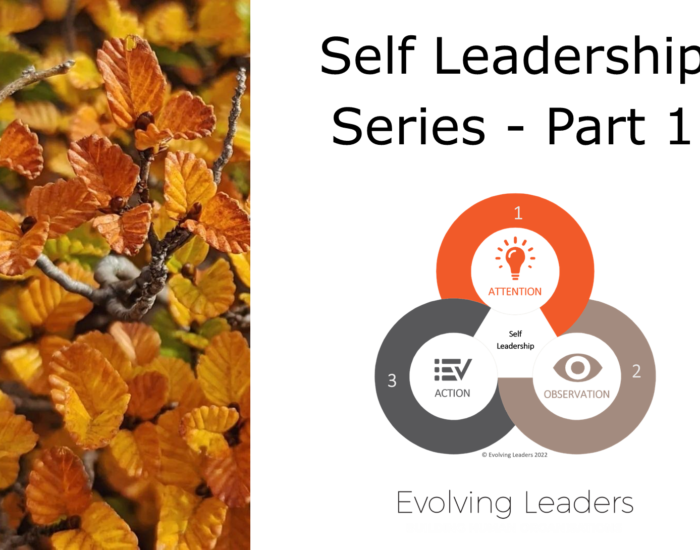5S Leadership Self-Care Model – The five keys to creating conscious change and restoring wellbeing
This post outlines our 5S Leadership Self-Care Model focusing on the practice of ‘selfcare’ to bring yourself out of your head and into your body, connecting more with ‘feeling and being’ and reconnecting with what matters to you. The 5S Leadership Self-Care model provides a roadmap to explore and experiment with establishing or refining the practice of self-care to restore wellbeing and help you to find a sustainable self-care rhythm that works for you.
Continuing on the theme of my last post about being stuck on the ‘thinking and doing’ treadmill, this time I want to outline our 5S Leadership Self-Care Model.
Self-care refers to the practices, habits and routines that we engage in on a regular basis to reduce stress and maintain and enhance our short- and longer-term health and well-being (social, emotional, physical, psychological). Optimal wellbeing and high levels of personal resilience are not possible without an intentional focus on self-care. Source
- It doesn’t come easily for most people.
- Optimal wellbeing* isn’t possible without self-care.
- Wellbeing is one of the outcomes of the practice of self-care.
- Your ‘sustainable self-care’ needs and practices will be unique for you
- Self-care is a choice that you make. It starts with you.
- It’s a practice – like learning a new skill, it takes time and commitment
*“Wellbeing is so much more than the absence of illness. It implies flourishing, thriving, being fully alive. balanced and calm & contented and at ease with life.” – GLWS
5S Leadership Self-Care Model
1.Space
Carve out the space in work and life to focus on your personal development. In just the same way that you schedule meetings with others, schedule ‘personal development/self-care’ ‘meetings with yourself’ in your calendar.
Give these ‘appointments’ the same priority you would if they were meetings, which may involve setting some healthy boundaries. You might need to say ‘no’ to some requests or things that feel like ‘shoulds’. You may need to more assertively express your needs to your partner, colleagues or team. It may require taking yourself away, perhaps booking into a retreat or a place in the country for a couple of days by yourself. During these personal development sessions, turn off your phone, find an inviting location where you won’t be interrupted, remove all distractions and show up fully by yourself for yourself.
Creating space is where it all begins. It allows the external ‘noise’ of life to quieten down enough so that you can hear your own breath and feel your own heartbeat.
This post outlines a personal story as a great example of the need to carve out pockets of space in our lives and/or moments to take a balcony perspective. Unless we do that, it can be difficult to see what is right under our nose.
I choose to let go – Why we need space to reflect
2. Stillness
Within the space you have carved out, welcome stillness. You may experience some resistance and an urge to be distracted away from stillness – that’s normal. Stay with it. You can use some of the tips in these two previous posts to begin to notice your breath, quieten your mind, etc.
7 ways to access deeper levels of consciousness
Stuck-on the doing treadmill. This might-help
The idea here is to shift away from your racing thoughts and begin to access how you are feeling and what you are noticing in your body. Given the pace at which most of us operate, this definitely requires a transition of some sort, so be kind to yourself and keep it short at first – even five minutes is a great place to start. It’s only through stillness that we can get beyond the mental chatter that doesn’t serve us and bring our focus and attention back to the things that really matter.
3.Self- expression
Whether it is by writing, singing, drawing, sharing openly and honestly with a trusted other or by some other means, you need to be expressing how you are feeling. When we express how we are feeling and what is happening for us, we learn about ourselves and the world around us. The very act of expressing how we are feeling helps energy stuck within us to move through us, enabling us to reflect. It helps us gain clarity about where to next place our energy and attention. It strengthens our connection to self and, when we share openly with a trusted other, it builds connection.
There are so many possible ways of expressing how you are feeling, but here are a three examples:
Start a Journal. One of the most time-honoured, simplest and most powerful ways of capturing your thoughts and feelings. Set a time each day to write in your journal. Until it becomes a habit in its own right, it’s a good idea to attach your journal time to an existing habit, for instance while having your morning coffee.
Your task is to simply write about anything that wants to be written about. Just get out of the way of yourself, ignore the internal critic and put pen to paper. Remember that you’re only writing for yourself. You may write about how you are feeling or what is present for you. Reflect on what is going well for you and explore anything that you have been triggered by. Anything that has an emotional charge for us is a gift – if we can take the time to understand why it has that charge. Writing helps us to open different perspectives. It clears the mind and opens the heart.
One way to get started, or change things up, might be to try the Morning Pages practice as outlined by Julia Cameron.
I use a cheap A4 notebook for my journal as I feel freer just to write without having to produce a work of art. I rarely ever read my journal again – it’s about a download and a tool to process and make sense of what’s happening in life rather than recording my life.
New Experiences. Seek out different people, places and experiences, bringing an attitude of curiosity into all that you do. Our senses are an important way of connecting our external experiences with our internal world of ‘feeling and being’, and new experiences bring our senses to life. If you’ve never tried art, perhaps now’s the time.
Start close to home. Expression doesn’t always need to be in words. Why not trying having a long-held hug with someone that you love. Count to 20 seconds; you can’t help but melt into each other. It’s magic.
Self – expression goes hand in hand with the first of our Leadership Super Power practices – Reflection. These posts offer some great tips and reflective questions that can kick-start your process of self-expression:
Reflective practice: a leadership super power
Making reflective practice a reality – no matter how busy you are!
4. Self-compassion
Self-compassion is a measurable trait. In 2003 no-one had defined or measured it. In 2017 there were 1340 studies on self-compassion. Self-compassion is strongly linked to wellbeing.’ Source: Neff 2018
Self – compassion is about learning to becoming your own best friend. This is about turning the compassion that you undoubtedly make readily available for others into watering and nourishing yourself. Kristin Neff, is world expert on self-compassion. Part of what she offers in her work is a radical shift to ‘relate to self’ in new ways.
Kristin defines self-compassion as:
- being a good friend to yourself
- treating yourself the way you would treat a good friend; and
- holding pain with love.
The first step is develop self compassion is to learn about self-compassion. This blog post –“Are you being a good friend to yourself” is a great place to start.
5. Support
Find the right support for you. It may be friends, your manager, a leadership development workshop or program. It’s often challenging to go this alone and having someone to ‘walk’ alongside you can accelerate the process. Engage an leadership coach if you feel you would benefit from non-biased, professional support to help you reach your self-care goals and to hold you to account. Or if you are a senior woman you might be interested in Cultivating Well 1:1 Coaching Program.
Summary
By taking committed action to the elements that make up our Leadership Self-Care Model you will be taking a major leap forward with your own self-care.
To commit to self-care is to value yourself, your relationships, your professional work. That’s simply too important to ignore.
Please reach out if we can help.
____________________________________________________________________________________________
Needing an overall wellbeing health check? You might like to consider the completion of a Global Leadership Wellbeing Survey (GLWS) . Designed for senior leaders, this survey will help you understand your state of wellbeing at work and at home and is supported through a debrief and development coaching conversation. It can be a great way of beginning your journey towards greater self-care and provide key inputs to help you establish a sustainable self-care rhythm. Contact us for details.





